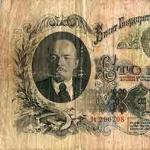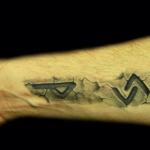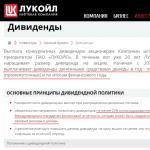NIKON D600 SETTINGS: ISO 100, F8, 1/160 sec, 50.0 mm equiv., 10.0 MB
Photographic skill grows over the years and is based on constant practice and experience. But sometimes circumstances are such that there is simply no time for full-scale shooting with models. However, the more often you shoot, the more your photography skill develops. It is worth reducing your practice, and this will immediately affect the quality of your pictures.
So how can you train in photography if you don’t have the time or opportunity to organize filming? In such cases, you can use one interesting way- a photo simulator that, with a small amount of time spent, allows you to always be in photographic tone. This simulator is shooting a scene in miniature.
Small figures, characters or toys are suitable as training materials. In our article we will practice shooting miniature scenes from Lego constructor.

At first, shooting miniatures will seem like a fun hobby. But you will soon realize that the simulator completely allows you to simulate a real film set. You will be able to practice setting the light, building a frame and composition, coming up with interesting stories, developing creativity and simply creating successful photographs.
Lego photography is macro
It is quite convenient for a photographer to practice on miniature objects. However, to really achieve good quality photography, it is better to work with macro photography. I recommend using macro lenses or macro rings. But first things first.

Typically, macro lenses are quite expensive. If you haven’t shot macro before and are not ready to rush headlong into this direction, then for training shooting with Lego figures, a lens with a macro function, for example, Nikon AF Zoom-Nikkor 24-85mm f/2.8-4D IF, is suitable. But such lenses, as a rule, do not provide a very large shooting scale. So, the one mentioned above has a shooting scale of 1:2. Full macro lenses allow you to shoot at a 1:1 scale. For example, if you shoot a 50-kopeck coin, it will fill almost the entire frame. Pictures whose scale exceeds 1:1 are considered microphotography, and anything less than 1:10 is considered simply a close-up.
You can work with a zoom lens that has a variable focal length. I shoot with Nikon equipment, where macro mode is only available on lenses with a fixed focal length. But this is a plus for photography - fixed lenses benefit from the ability to beautifully blur the background.
For example, one of the most inexpensive full-fledged macro prime lenses is the Nikon AF-S DX Micro NIKKOR 40mm f/2.8G ED. Nikon AF Micro Nikkor 60mm f/2.8D was used in the photographs for this article.
In addition, you can simply purchase macro rings - hollow tubes that increase the distance between the mirror and the lens. This will allow you to get closer to your subject, because many lenses have minimum distance focusing distance of 50 cm, which is too large for small details. Pay attention to whether you manually change the aperture of your lens. If not, then you need macro rings with electronic filling to transfer values to the lens chip. Otherwise, the diaphragm will be in the closed position.

And finally - one more piece of advice. You can experiment with macro right now, without going to the store. To do this, simply turn your lens over to the other side. Be careful and immediately close the hole with the camera mirror so as not to collect dust. And it is in the inverted position of the lens that you approach the subject until you see how its outlines emerge. Then all that remains is to take the photo.
All photographs for this article were taken with a Nikon D600 camera and a Nikon AF Micro Nikkor 60mm f/2.8D lens. But you can also shoot with amateur crop cameras Nikon D7100, D7200, D5500. There are not many macro lenses, but there is still a choice. The Nikon AF-S DX Micro NIKKOR 40mm f/2.8G ED entry-level macro lens is suitable for a crop camera. He is quite capable of delivering excellent quality Images.
Subjects/Composition
Shooting miniatures allows you to develop your vision as a photographer. After all, it is possible to transfer all subjects and compositions into our “big” world and not lose their photographic form. As a rule, at first we only have enough photographs of figures in the grass or on a tree. But gradually the imagination begins to demand more complex shooting.

You should start shooting with a central composition, where the main subject is in the very center of the frame. If it weren't for the setting sun and nice bokeh in the photo above, it would look pretty boring.
Therefore, complicate the composition with each frame. Pay attention to the rule of thirds, when a photo is divided into 9 equal rectangles (3 vertically and 3 horizontally).

There is a very convenient function for turning on this grid directly in the viewfinder itself. To do this, you need to go to the custom settings menu, select the “Shooting/Display” section, and in it - “Display grid in viewfinder” (the menu may differ slightly; in in this case- this is the Nikon D600 camera menu).


With this grid in front of your eyes, you can think about framing and the rule of thirds. The point is to position important element frame along one of the lines or where the lines intersect. At first, you always want to place your main subject in the center of the frame. Placing it away from the center, following the rule of thirds, will create a more attractive composition, so try to avoid patterns.

The subject is always very important in photography. Don't be the operator of the shutter button, come up with a story for your pictures. It is important that the photograph makes the viewer think and fantasize. This is when your photo will differ from the everyday one. This workout develops creative thinking, after it you will begin to improvise and think in terms of plots with real models in full-fledged shootings.

Another important technique is defocus, that is, the use of depth of field when the main semantic object of the photograph is in sharp focus, and the rest are blurred. This great way add a sense of depth to the frame. Therefore, you can use objects in the foreground to blur.

An additional compositional technique that should not be forgotten is rhythm. This concept refers to a sequence of (more than two) identically shaped objects. Rhythm actually surrounds us everywhere: houses, lamps along the road, trees in the park, ears of grass. By including it in the frame, you organize the space of the photo, simplify its perception, and also add dynamics. Also use lines, they force the viewer to follow them. In the photo below, there are a lot of lines created by the green branches; following their trajectory, we always come to the main object.

Setting the light
Working out lighting schemes on miniatures is simple and accessible, because for lighting you can use ordinary lamps at home. To illuminate Lego figures, for example, flashlights are sufficient. You can easily work out the lighting scheme on the figure and then transfer it to real life.

Here is the example above: the photograph “Writer in his office.” Two light sources were used for filming: one coming from the window, and the second source filling the foreground.

Is it possible to transfer this scheme to real life? Yes, we can use window light and illuminate the model with a second source in front or even a constant light from above.
This work will give you the opportunity to theoretically work out lighting schemes; experiment and achieve great results.

- experiment with location, shoot on the street and at home;
- come up with stories, play out scenes from everyday life;
- remember the composition, try to constantly change something in the frame, do not take the same type or similar pictures;
- try different schemes Sveta;
- be inspired by other people's works, there are a lot of them on Instagram using the hashtag #lego.

Conclusion
You can create all the necessary locations for shooting with miniature objects without leaving your home: our desk It will easily become a showdown zone for superheroes, and the kitchen will become a landing site for foreign ships.

It all depends on you and your imagination. Practice compositional techniques on figures, and over time you will easily transfer them to our big world. And perhaps you will be carried away into your microworld by object photography.
You don't have to travel to get to epic locations. You can create stunning shots inspired by superheroes or your favorite movies without the need for costumes, models or studio lighting. All this can be obtained at home or in your yard.
Photographer Benedek Lampert from Budapest, Hungary was able to create truly cinematic scenes using children's LEGO construction kits. Fog, rain and smoke are not effects made in Photoshop. All scenes were filmed indoors or outdoors with suitable terrain. During the shooting, water splashed and other elements were scattered. Only a few shots used Photoshop, as it was impossible to achieve the desired effect live.
Things like flying dirt or splashes or filling with smoke are very difficult to predict, so each scene took many hours to film. Filming the entire episode took more than a month.
 © Benedek Lampert
© Benedek Lampert  © Benedek Lampert
© Benedek Lampert  © Benedek Lampert
© Benedek Lampert  © Benedek Lampert
© Benedek Lampert  © Benedek Lampert
© Benedek Lampert  © Benedek Lampert
© Benedek Lampert  © Benedek Lampert
© Benedek Lampert  © Benedek Lampert
© Benedek Lampert  © Benedek Lampert
© Benedek Lampert  © Benedek Lampert
© Benedek Lampert  © Benedek Lampert
© Benedek Lampert  © Benedek Lampert
© Benedek Lampert Chevrolet
\
For fans Star Wars and LEGO X-Wing Starfighter

\
John Lewis Statford

\
Lego set Breaking Bad

\
Thomas Pulsom LEGO bird figures

\
In addition to playing Lego from morning to evening at their work, the designers of the famous design plant work in a wonderful office. The office is completely designed by architects and designers Rosan Bosch and Runa Fjord(Rune Fjord). This Lego office located in Billand in Denmark.

\
This you have not seen before! 40ft Christmas tree made entirely from Lego! Artist Duncan Titmarsh(Duncan Titmarsh) with the help of schoolchildren and scouts built it from 600 thousand construction bricks. It is decorated with 1200 balls and garlands that hang on 172 branches. This is the world's tallest spruce made from a construction set.

\
Small agency NPIRE from Hamburg has a simple philosophy: "Work and Live." It took a whole year to build this LEGO arch wall. The project took more than 55,000 pieces and resulted in a 3-foot-wide wall. They had to work and build the wall at the same time, say agency employees.

\
Artist Mike Doyle(Mike Doyle) created these beautiful Victorian mansions from just one constructor Lego. He didn't use any additional materials, creating these buildings. One house took up to 600 hours and about 130,000 parts.

\ ,
Chevrolet with the participation of students from Detroit, they created a life-size Batmobile from Lego. In total, more than 300,000 parts were used and more than 222 hours were spent. The design was presented at the NAIAS auto show in Detroit. Next, watch the video of how the car was assembled.
\
For fans Star Wars and LEGO it will be interesting to see spaceship X-Wing Starfighter life-size, built entirely from LEGO. It took more than two years, 5,335,200 construction bricks, 32 people and more than 17,000 hours to build.

\
While the Lego Colosseum is still the most impressive Lego structure, this one is also quite large. Built entirely from Lego bricks and inspired by the London Olympic Stadium, the project required four people to work for two months.
The stadium is currently on display John Lewis Statford(official store of the Olympic Games - 2012 in London, in mall Westfield) and attracts a large number of buyers.

\
They say that when children play, they learn. I wonder what good things can teach Lego set Breaking Bad? This was posted by Redditor GaryIsYourDotCom.
Breaking Bad is an AMC series about a high school chemistry teacher who turns to drug production when he learns he has cancer.
Season five starts in three weeks. You can continue to watch the trailer.

\
Thomas Pulsom(Thomas Poulsom) - Bristol artist who builds LEGO bird figures. He created a series of 6 popular birds native to the UK, built entirely from LEGO parts. Pulsom now has the opportunity to turn his creations into official LEGO products if he receives enough votes on the brand's website.
As a child, many people dreamed of owning a Lego set; back then it was chic.
Now, only a lazy person doesn’t sculpt this construction set, and so professionally, as if he had been doing just this all his life.
I suggest looking at objects made from Lego.
1. Model of the aircraft carrier "Harry Truman" from Lego. Its length is about 5 meters, height – 1.2 meters.
2. This model was created from more than 200,000 blocks, and the ship weighs more than 160 kg. It took more than a year to create this model.

3. There is electric lighting on the flight deck, in the hangar, and also inside, as well as movable elevators, radars and a motorized catapult!

4. Lego Frigate “Nebulon B2” from “Star Wars”.

5. Fully functioning 32-screw eight-cylinder engine. Three hours to assemble and over 2800 Lego blocks. Has illuminated accents.

6. The main master of this creation, Pascal Lenhardt, is working on his masterpiece - the Berlin Palace. The scale of the model is 1:45, it is created from 400,000 Lego blocks. Although reconstruction of the original building is still delayed, a model was completed on January 6, 2012.

7. Unofficial set from the game “Portal 2” from Lego.

8. The Millennium Falcon ship from Star Wars from Lego.


10. But S&M Lego for adults.

11. Roman Colosseum made of 200,000 pieces. One part of the model shows the Colosseum 2000 years ago, the other shows its current state.



14. Lego necklace.


16. Workers in Johor Bahru rest next to a life-size Lego figure. Asia's first theme park dedicated to the popular designer was created entirely from Lego blocks on a scale of 1:20. It features 17 countries and cities from across the region, including Laos, Cambodia, Vietnam, Brunei, Myanmar, Philippines, Indonesia, China, India, Singapore and Kuala Lumpur. The park will open in September 2012.




